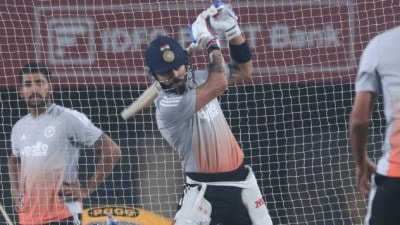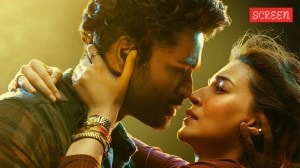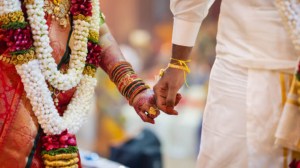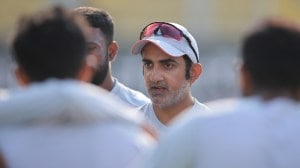EVERYBODY DANCE NOW
If the music is on, you bet Indians are shaking their hips. There is a dance school in every galli and a Madhuri Dixit dying to boogie out of every young woman. We, the people, just can’t stop dancing.

Someone, somewhere is dancing. Right now. Perhaps flinging their limbs awkwardly in a garish pink costume or pirouetting with grace in a dance class. But, they are following the beat—with happiness. Like Damini Dutta, a teacher at Pon Vidyashram in Chennai, who sits glued to the television when Saroj Khan’s Nachle Ve comes on air. At the end of the show, she steals into her room, stands before a mirror and lets the thumkas flow. For others like Anju Ahluwalia, 30-year-old homemaker and mother of a six-year-old in Noida, dance is a passion to be shared. In January, Ahluwalia turned a small room in her house into a dance school and called it—fittingly—the Aaja Nachle school. In just a month, she has had 30 students, mostly housewives.
The movie might have bombed but across the country, the young and the old, software professionals and singletons in search of love, have taken Aaja Nachle’s message to heart and swayed on to the dance floor. The Salsa India school, which started out with just 10 students in Delhi in 2001, now has 2,000 students spread over eight studios in the NCR, five each in Kolkata and Mumbai and one in Pune. In small towns and big, the number of dance schools has seen a quantum leap. Choreographer Saroj Khan says she has been flooded with mails since her programme began, asking her to teach a particular number or let them audition or apprentice with her.
It’s not only the hip youngster who wants to show off his moves on the dance floor. At Versatile Dance Class at Bhanwarkua Square in Indore, the afternoons are busy. Jagjit Singh, owner of the school, reserves that time for housewives and women keen to pick up Bollywood numbers for wedding functions and sangeets. Singh says, over the last few months, afternoon classes have made more money than the regular ones.
Dance class no longer means pushing reluctant girls in pigtails to kathak or Bharatnatyam gurus. The new beat of the times is salsa, followed by jazz, ballet, meringue, bachata, cha cha and hip-hop. In Gujarat, the land of the dandiya, it’s the salsa which is drawing the crowds. Hardik Pandya, administrative head of the Shiamak Davar Institute for Performing Arts, Ahmedabad, says, “It’s been 10 months since we came to Ahmedabad and the response has been great. More than 2,000 persons have taken classes with us. Salsa remains the most sought-after.” Many corporate firms in the city have direct tie-ups with dance schools and often arrange for sessions for their employees.
Even in a traditional city like Chennai, western dance—and surprise, surprise—Bollywood dancing is picking up. “People look for salsa and jazz. But yes, Bollywood dance too is growing in popularity,” says Jeffrey Vardon, who runs the Hot Shoe Dance Company in Chennai. Vardon told us of instances when mothers-in-law tag along with their daughters-in-law to supervise what is being taught and then get drawn into the activity themselves. There are dance clubs in Chennai that host salsa, hip-hop and retro nights. “It is not just the kids and the youngsters who are coming to our school. We have grandmothers learning along with their grandchildren and parents with their daughters or sons. Dance is becoming a social fun thing,’’ says 30-year-old John Brito, who opened Chennai’s first dance school.
It’s not a coincidence that so many of the eager learners are women. “For most people, particularly women, it’s a way of escaping their regular roles at home. Besides, as an ethnic form, the acceptance of dance is greater, so it’s not like they are breaking a taboo,” says Isha Singh, psychologist, Max Healthcare, Delhi.
In Kolkata, even the bhadralok has stopped looking down at the swing-your-hips routine. A popular school in the city, Vive La Salsa, opened at the end of 2005 and has five centres at upscale addresses. “We don’t advertise but every month, when a new class starts, we find our hands full,” says Aditya Upadhya, owner and chief instructor of the centre. The students are between 20 and “late 40s,” many of them exposed to the dance through Bollywood, television shows and trips abroad. “Even five to six years ago, Bengalis would form only about 2-3 per cent of the student base at such dance schools. Today, they make up 30 per cent of our students,” says Arindam Mukherjee, manager of Dance World in Kolkata.
Why dance? Why, when you are an Indian with stiff limbs and an ample figure, expose yourself to sniggers by twitching those hips? There as many reasons as there are people. The rhythm is irresistible. Someone’s put on Dard-e-Disco. And the most common motive—keep up with the Gulatis. Alka Aggarwal, 40-year-old mother of an 18-year-old daughter, is learning how to groove to Sajna ri vaari at Ahluwalia’s school. Alka has never danced before. But now she wants to shake her leg with the perfection of a Bollywood diva. “At my brother’s wedding a year ago, I could not muster the courage to dance. I didn’t know how to dance.” For her niece’s wedding on February 14 though, Aggarwal is determined to put up a great show.
And when television swamps you with images of celebrities, thin or fat, jiggling in paroxysms of delight, even those with twin left feet aspire for that impossibly agile move. “Thanks to reality television shows such as Jhalak Dikhla Ja and Nach Baliye where actors can jive effortlessly under a choreographer’s guidance, people have now begun to feel, ‘If they can, why can’t I? All I need is a bit of professional help.’ With this help, they try to overcome their hesitation to dance at parties,” says Ritu Soni Kapoor, director of Delhi-based Zenith dance institute. Zenith trains students in Bollywood or free-style dancing, which is still the most popular genre, and has 13 centres across the capital.
The glamour, surely, is bewitching. Says Harchas Kaur, a 31-year-old fashion merchandiser in Delhi, “When I performed as part of a troupe at Siri Fort auditorium, I felt like a star.”
A better reason, one which is drawing many young people, is love. Tanisha Chauhan, 22, a senior consultant with a PR firm, discovered that it’s not easy to be single in the city when she shifted base from her hometown to Delhi. The irregular meals were beginning to show and fitting into her formals was getting tougher by the day. “Exercise was boring so I joined jazz dance lessons,” says Chauhan. The Ludhiana girl admits that the prospect of falling in love over slow jazz moves looked enticing. She plunged into the course but was soon struggling for breath. “In the beginning, it is 80 per cent exercise and 20 per cent dance. At the end of the exercise session, everybody looked so sweaty and worn out, nobody seemed attractive or dateable anymore,” laughs Chauhan.
But even if the prospect of love fizzles out, it makes business sense to keep the dancing shoes on. Dance is the networker’s greatest tool. “From the time that you have changed clothes, worn your shoes, taken a water break, business cards, phone numbers and e-mail addresses have been exchanged. Between learning how to do the Coffee Grinder and the Mashed Potatoes, meetings have been planned out,” says Chauhan.
Jeffrey Vardon, who runs the Hot Shoe Dance Company in Chennai, says, “Money has made a difference. Not just women, men too are joining dance courses. People travel a lot, and if you are clubbing with your business partners, it helps to have a basic knowledge of dance, just to show that you are familiar with the club culture. I have had 50-year-olds coming in for primers on shaking a leg.” Shelly Athma, who has taught dance in Pune for 15 years, now feels the art form was always in vogue. “It was just that people could not afford it. But with the rising living standards, everybody is making that extra effort,” she says.
Fitness too, is an important aspect. At Apollo Hospital at Sarita Vihar, Delhi, doctors have been taking dance lessons twice a week for the last few years. “We teach them salsa and jiving, and it’s mostly a freewheeling session where they can de-stress,” says Aamir Ahmed of Ball Rumours Dance Studio, who conducts the classes.
Which are the most popular dances? Bollywood or freestyle dance wins hands down. After all, we have been dancing to Meri yaad ki shaadi hai for ages now. Salsa is a close second. “Salsa is the most social dance, not at all as stiff and technical as ballroom dance,” says salsa teacher in Chandigarh’s Ozone Fitness ‘n’ Spa, Varun DS Rana. “Unlike ballroom dance which is elitist, salsa belongs to everyone. It has a lead and follow, it’s interactive and you can follow the moves to any number.”
But as we wriggle into our dance suits with gusto, it’s perhaps only fair that the question does not go a-begging. Are we good dancers? Says Kaytee Namgyal, salsa trainer and founder of Salsa India institute, “Indians are extremely influenced by Bollywood music, which always has lyrics. That is why they aren’t able to interpret music without words. They dance to words, not to the tunes. Remove the words, and I’d say 80 per cent of Indians would be lost. But they are fast learners. All they need is proper guidance.” Or, as Damini would say, all they need is a mirror.
(Inputs from Dipanita Nath, Anushree Majumdar, Jaya Menon, Shveta Vashisht Gaur, Saurav Kumar, Jas Kiran Kaur)



- 01
- 02
- 03
- 04
- 05




























